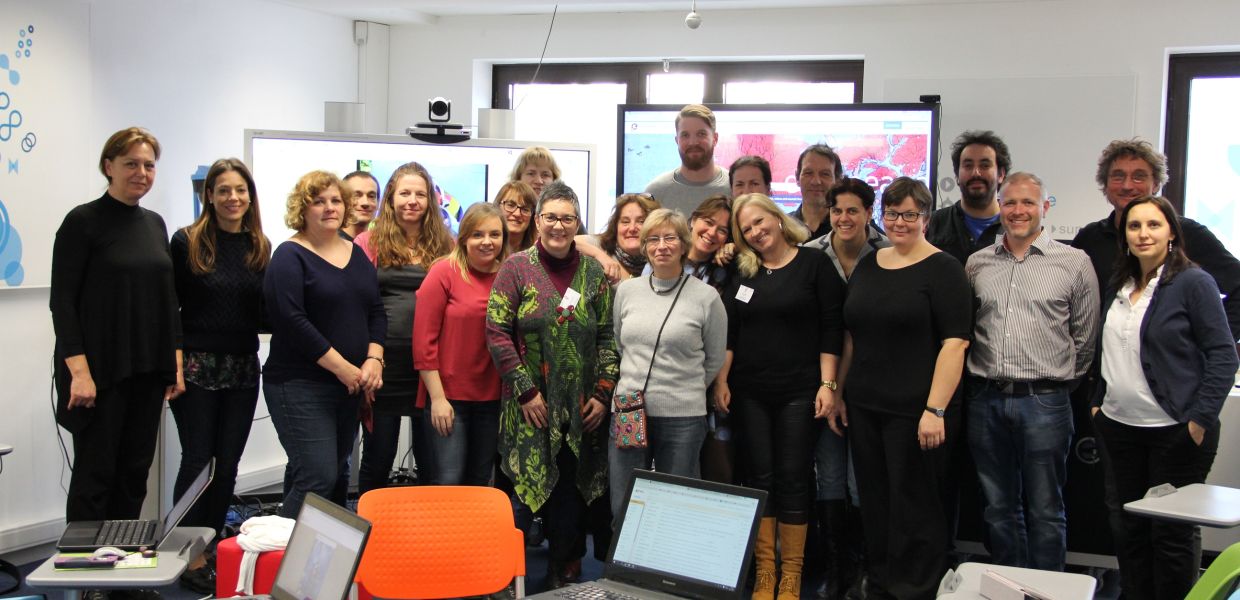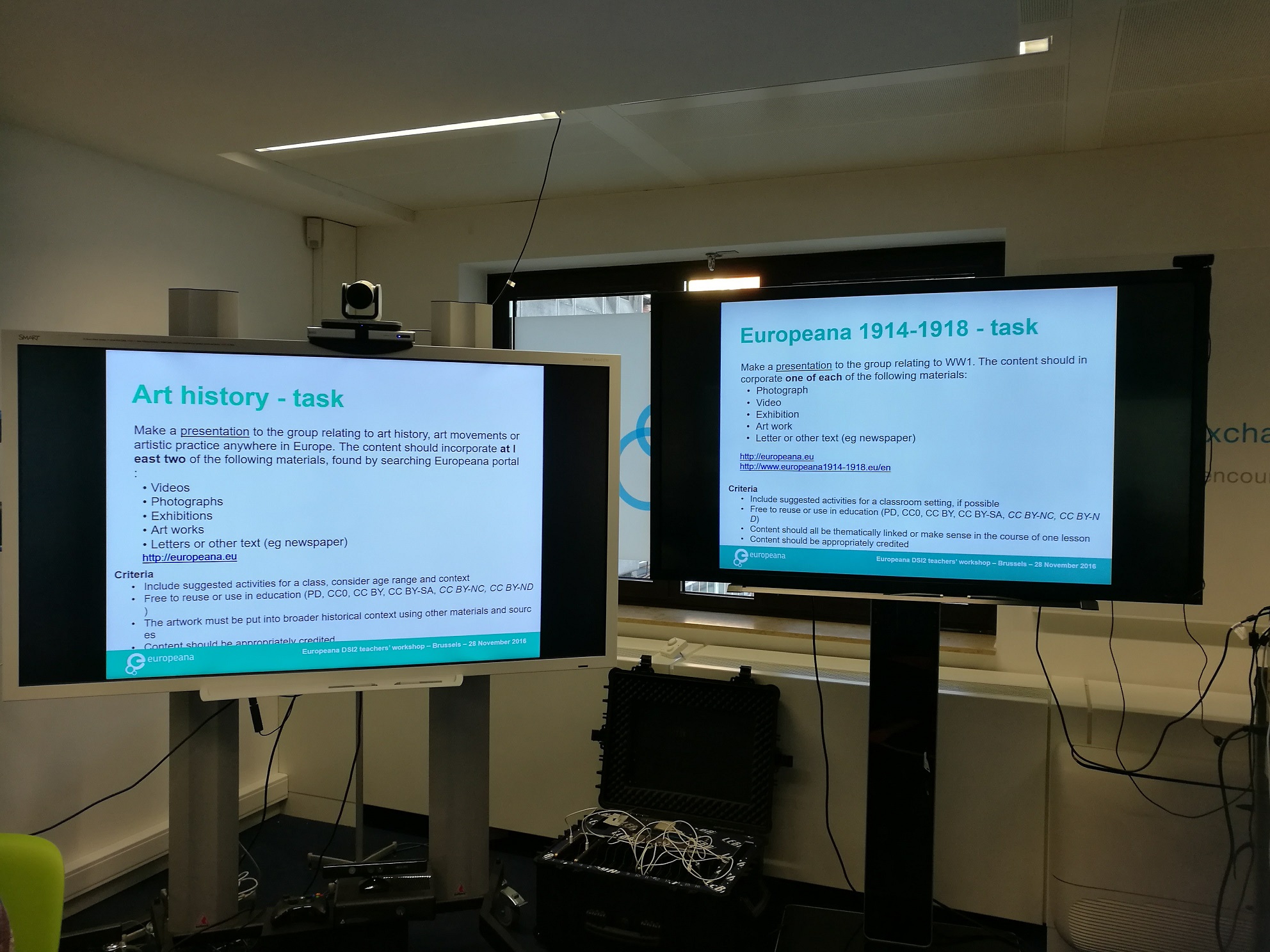#Europeana4Education: Europeana taster for teachers

Twenty teachers of all disciplines from 10 EU countries took part in a workshop — from 28-29 November, led and hosted by European Schoolnet (EUN) in Brussels — to help us better understand how educators are engaging with, searching for and using digital cultural heritage content. Only a few of the teachers, a mix of primary and secondary school teachers, were aware of Europeana before the workshop. As a result, the workshop was a great opportunity to test how they responded to our educational offer.
We were lucky to be hosted in EUN’s Future Classroom Lab, an inspiring space that aims to redefine formal educational environments and innovate how teachers teach and pupils learn. Bart Verswijvel, Pedagogical Advisor at EUN, first introduced the Future Classroom Toolkit and the range of resources available to help understand and bring about innovation in a school.
After lunch, it was time to introduce Europeana. We started with who we are and what we do, the types of learning platforms where you can find and use our content (like the Learning Resource Exchange and the FACES app), to the content available on our site and the best ways to find the content you need for your class.Before the workshop began, teachers were asked about what themes were most important in their classrooms at the moment. From those who responded, the primary themes emerging were the First World War and art and art history — two areas where Europeana has really strong and engaging collections. So, after showing teachers the best ways to find content, we set them a task. As groups, they had to choose a theme and find related content from either art history or the First World War on Europeana using a variety of media — from exhibitions to letters to videos — and to create a learning activity exploring that theme and present this to the group.
 The teachers' tasks. Brussels 28 November 2016, CC BY-SA
The teachers' tasks. Brussels 28 November 2016, CC BY-SA
The task sounds simple but the teachers had a lot to consider in a short space of time. First, how do they find relevant content and what searches are most effective? Second, is the material suitable to be used in an educational setting (based on the licence)? Third, is the content of high enough quality to be used? And finally, how would they credit the resource? When the teachers had sourced the content, they were asked to consider the types of learning activities they could base around their theme. The themes that emerged were diverse: from the simple — horses in art history — to the complex, like representations of time in art and love and families in the First World War.
We also had time at the end of the day to discuss how they found the process of searching for their content. They found the introduction to the licences, search tips and crediting very useful. They also loved the personally contributed stories, memories and pictures on Europeana 1914-1918 that you can’t find in any other archive. The teachers were also now able to discuss the benefits of using Europeana’s search instead of an internet search. Knowing that the content is legally accessible and in high resolution is a great draw for educators.
We were able to capture a lot of additional great feedback from the teachers. Their comments and suggestions will be useful to help us shape how we work with educators and educational partners. The next step is to bring the same teachers back together at the end of February 2017 to see if and how they’ve been using Europeana content, what new challenges they may have encountered and what inspiration they’ve found and want to share.
Thanks to Gina Mihai, Bart Verswijvel and their colleagues at European Schoolnet for making this opportunity happen as part of our partnership in DSI2. Thanks also to the teachers for their enthusiasm!
Check out the slides to find search tips, assistance with attributing content and an introduction to licences that can be used in education, and, last but not least: have a look at pictures from the teachers’ workshop.

